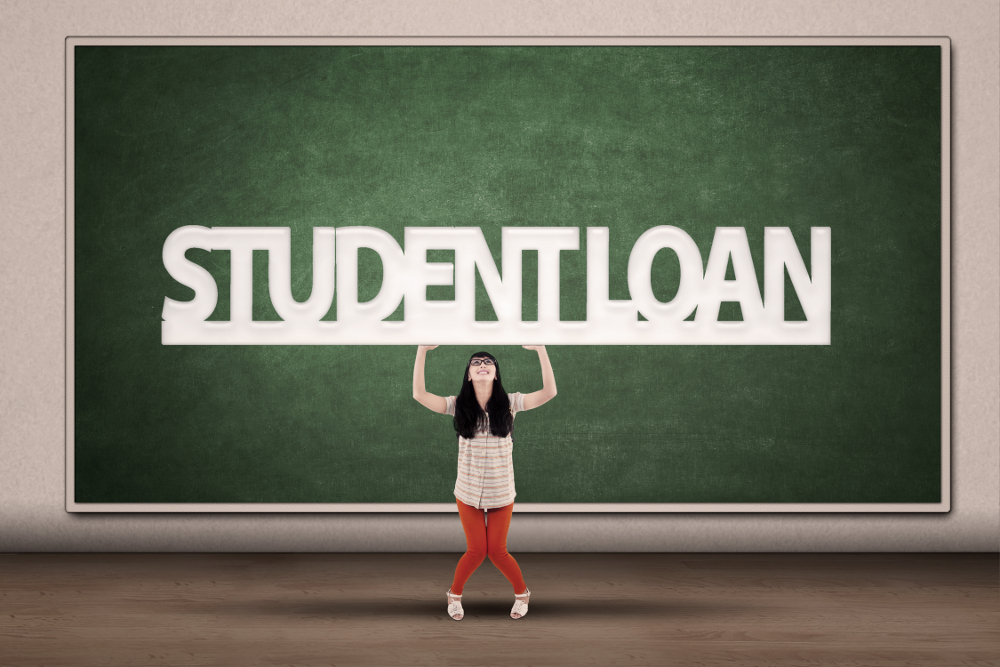STUDENT LOANS
STUDENT LOANS
FREE DEBT ANALYSIS
Speak with a certified debt management counselor.
Our 3-Step Process
Organize & Understand Your Student Debt
Our specialists will ask you a few questions about your student loans, and help you understand what you are paying and what you should be paying.
Find Out Which Repayment Plans You Qualify For
During your free consultation we’ll help you determine which government plans you qualify for. There are many options and finding the right plan for you will be based in part on your debt, the type of debt, your job and your work history.
Help You File The Paperwork To Fix Your Debt
If you choose to use our document preparation services (there is a fee for this service, but there is no obligation to use it) we will help you prepare and file the proper paperwork with the Department of Education to reduce, defer, or remove your student debt.
Common misconceptions of student loans
Student loans and related debt seems to have built up a long list of misconceptions related to applying and making repayments. A newly enrolled college student often relies on peers for guidance which can result in a lot of false information or half-truths.
Here are some of the common misconceptions:
- It can be seen as a good debt. But this is only true if the education and resulting diploma help to secure a good job. Ideally, the student loan shouldn’t exceed an amount that is more than the first annual salary.
- A student loan continues to run until graduation. This isn’t true; each loan runs for a single school year. Any changes in the financial situation can impact the loan going forward.
- Private and federal loans are much the same. In truth, there are significant differences in relation to forgiveness programs, load modifications, and interest rates.
- Declaring bankruptcy is always an option. This isn’t true because private and federal loans aren’t resolved in the process of bankruptcy.
How does a student load debt impact people?
Studies indicate that nearly 70% of college students who graduated in 2014 left full-time education with an outstanding debt of about $32,500.
This is a high amount of debt to pay back at such a young age, which will also impact other aspects of life such as starting a business or purchasing a home. It is also reported that nearly 37% of the total outstanding debt for adults aged 20 to 29 relates to student loans.
But for the students that get the diploma, there are more career opportunities and ability to start employment on a higher salary compared to those didn’t progress. In fact, the college graduate has the potential to earn nearly $800,000 more over the course of their working lifetime.
Latest trends in student loans
The increasing costs related to further education are starting to slow and the overall amount borrowed by the student is starting to fall. Latest figures indicate the cost of an in-state, four-year university course showed an increase of only 2.9%, which is said to be the lowest increase since 1975. And the overall cost of borrowing for students has declined by nearly 9% in the last 3 years.
But the negative trends over the last decade don’t print a pretty picture. The outstanding debt on student loans has increased from $260 billion in 2004 to $1.2 trillion 10 years later. This resulted in the average debt increasing from about $18,500 to $32,500. Plus, the over 60’s have seen a major increase in student load debt with 2.1 million people and over $40 billion due to be paid back.
What to do before applying
One of the major requirements to complete prior to applying for any student loan is to understand and fill in a Free Application For Student Aid (FAFSA) form. Once the form is completed it is used by the U.S. Department of Education (DOE) to help calculate the student’s financial needs and assist with federal money. Also, the FAFSA form can be used by colleges to help the process of awarding student loans or grants.
While there are a wide variety of options to investigate in the process of applying for a student loan such as interest rates, different packages, going away or stay-at-home, private or public, out-of-state or in-state, it isn’t possible to move forward until the FAFSA form has been completed.
Interest rates on student loans
The interest rates on a student loan are a major factor in whether a student or their parents are in a position to take out a loan. Interest rates are based on the outstanding capital left on the loan which can vary significantly with the different types of available loans.
Federal loans offer the protection of a fixed interest rate, which for the 2014-2015 academic year was set by Congress at 4.66% for the undergraduate, 6.21% for the graduate student, and 7.21% for the parents applying for a Direct Plus loan.
Also, the method in which the interest rate applies varies with the federal loans. A subsidized student loan does not apply interest until 6 months after graduation, and again the interest doesn’t apply throughout the deferment period. But for the unsubsidized student loan the interest rate applies immediately from the time it is received.
Are there other options for financing?
An alternative to applying for a student loan and attending out-of-state school is to live at home while progressing through further education. This has the ability to save a significant amount of money while studying for a four-year degree. Alternatively, if it isn’t possible to live at home while studying, sharing accommodations can help to cut costs. Other cost cutting techniques includes signing up for extra classes to make it possible to graduate in 2-3 years, or split the time between living at home and living away.
Student loans are a practical method to cover the cost of graduate school or college education. By applying for a loan it is possible to gain access to educational opportunities that wouldn’t otherwise be possible. However, many graduates are left with a significant financial burden by the time the diploma has been received.
It is estimated that American students currently owe nearly $1.2 trillion in student loan debt, so it makes sense to carefully consider the needs when applying for this type of financial assistance. On average, a student attending class in 2014 was left with a debt in the region of $32,000. Plus, other financial obligations may need to be met in the future, such as a mortgage, auto loan, and credit cards.
Review your student loan consolidation options
Stop getting schooled by student loan debt.
FAQ
Q: Does The Call Cost Money?
A: No, our consultation service is completely free. If you decide to use our document preparation service to file your paperwork, there is a fee associated with that, but the call to determine which programs you qualify for is free. You can even file the paperwork yourself if you wish, after you talk to our specialists.
Q: How Do I Find Out Which Programs I Qualify For?
A: Our specialists will ask you a series of questions, and then gather some personal information from you to verify income and debt. You do not have to provide this information, but if you don’t we can’t guarantee which programs you qualify for. After they process your information, the specialist will give you various options for deferment, consolidation, or forgiveness.
Q: How Long Does It Take?
A: On average, you can find out which programs you qualify for in under 10 minutes on the phone. If you don’t have that long to speak you can have a specialist call you back at a time when it is convenient for you.
LATEST BLOG ARTICLES
Need a Mortgage? Here’s What Lenders Look For
If you’re ready to stop paying rent to a third party and start putting your money towards establishing equity in a home you can call your own, getting your financial ducks in a row is of prime importance. After all, you don’t want to fall head over heels for a house...
Where My Student Loan Debt Landed Me
2016 marks five years from my college graduation. I’ve been adulting, with various degrees of success, for five whole years now. I’ve held a plethora of jobs over that time, from waitress to Development Director. I’ve also experienced periods of underemployment. I’ve...
Don’t Make These 5 Credit Card Mistakes
When I was eighteen, with my first few meager paychecks under my belt and a new sense of adult pride, I went shopping. As I laid the items on the counter to pay, the cashier asked if I would like to sign up for a card to receive a discount on the items. Somehow I only...



